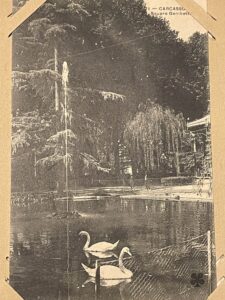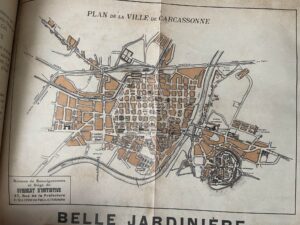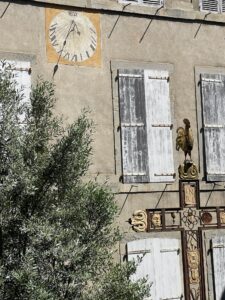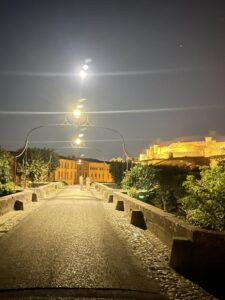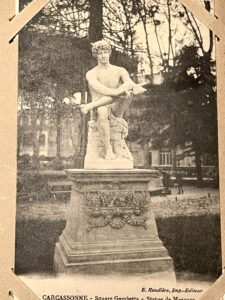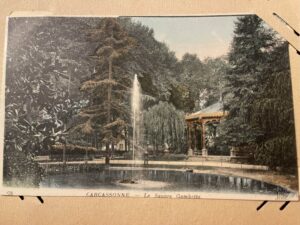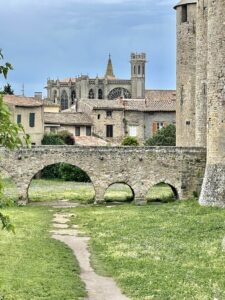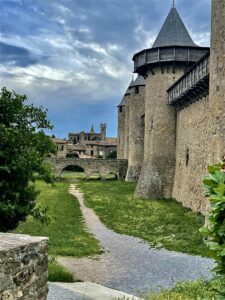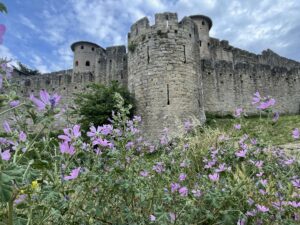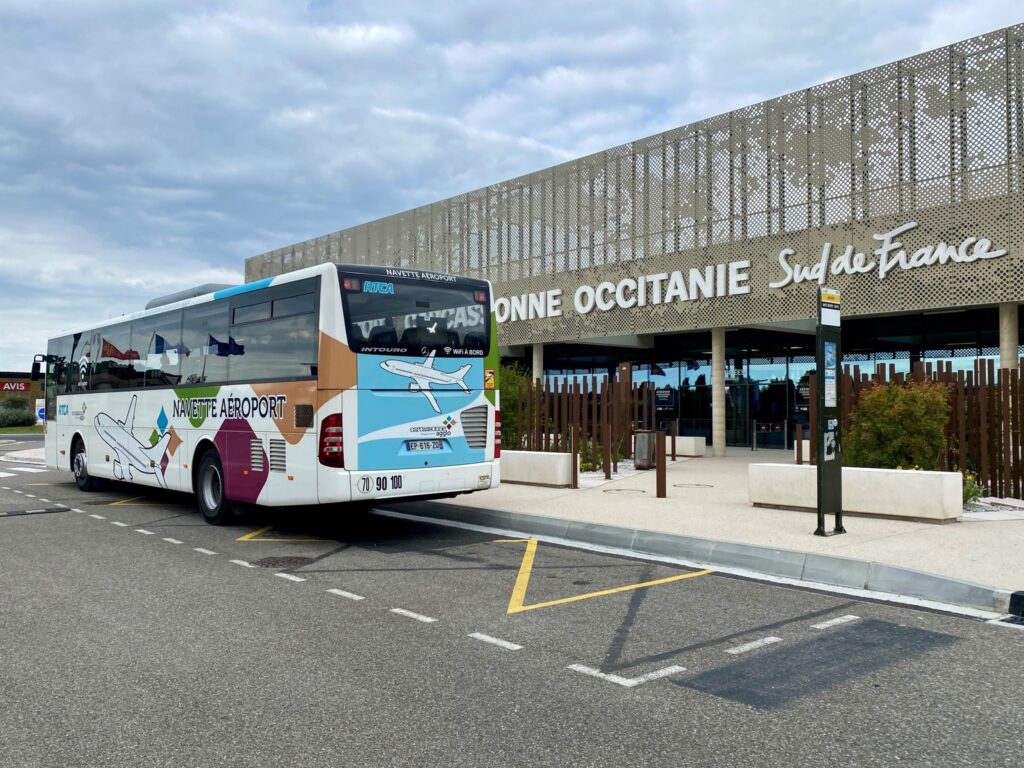The Story of Carcassonne: A Journey Through Time
Welcome to Carcassonne, a place where history comes to life! As you walk through its medieval streets and gaze upon its towering walls, you’ll feel like you’ve stepped into the pages of a storybook. But this fairy-tale city has a real and rich history that stretches back thousands of years. Let’s dive into the fascinating tale of Carcassonne, a city that has witnessed the rise and fall of empires, withstood sieges, and remains one of the most stunning examples of a fortified medieval town in Europe.
The Early Days: A Celtic and Roman Past
Carcassonne’s history begins long before its famous walls were built. Around 3500 years ago, during the Neolithic period, people settled on the hill that is now home to the citadel. But it wasn’t until the arrival of the Celts around the 6th century BCE that the area started to become a more organized settlement.
By the 2nd century BCE, Carcassonne, then known as “Carsac”, was under Roman control. The Romans recognized the strategic importance of the site and fortified it as a defensive outpost. They built the first walls around the hilltop, some of which still form part of the foundations of the citadel today. The Romans named the town “Colonia Julia Carcaso”, and it became an important trade and military center in the region of Gaul.
The Roman influence remained strong, and under their rule, Carcassonne flourished. However, as the Western Roman Empire began to crumble, the city faced its first major test.
The Legend of Dame Carcas and Charlemagne
One of Carcassonne’s most famous legends takes place during the 8th century, when the city found itself under siege by the army of the Frankish king Charlemagne. At that time, the city was ruled by Saracens, a term used to describe Muslim forces who had pushed into southern France. According to the legend, the city’s ruler, Dame Carcas, was determined to defend the town against Charlemagne’s forces. After a long and drawn-out siege, Carcas came up with a clever plan. She ordered the last remaining pig and sack of wheat to be thrown over the city’s walls, making it seem like the town still had plenty of food.
Charlemagne, believing the city was well-provisioned, decided to abandon the siege. As his army withdrew, Dame Carcas rang the city’s bells in celebration. “Carcas sonne” (Carcas rings), which is said to be how the city got its name.
While the story is likely more myth than fact, it adds a charming layer to the history of this ancient fortress!
The Middle Ages: Carcassonne as a Medieval Stronghold
By the 12th century, Carcassonne had become a bustling and prosperous medieval city, now ruled by powerful feudal lords. The Trencavel family were the key rulers at this time, and under their leadership, the city expanded and strengthened its defenses. The current double-layered fortifications began to take shape during this period, including the construction of the Basilica of Saints Nazarius and Celsus, a stunning example of Romanesque and Gothic architecture.
However, Carcassonne’s prominence also made it a target. In the 13th century, the city found itself at the heart of the Cathar Crusade, a violent conflict initiated by the Catholic Church to root out the Cathar heresy, a religious movement that was spreading through southern France. The Cathars, who were considered heretics by the Church, had strong support in Carcassonne and surrounding areas.
In 1209, the crusading army, led by Simon de Montfort, besieged the city. The Trencavel family and Carcassonne’s citizens fought valiantly, but after two weeks, they surrendered. The Trencavel lands, including Carcassonne, were handed over to Montfort, and the city came under the direct control of the French crown.
The Rise of the Citadel
After the Cathar Crusade, Carcassonne became a key defensive stronghold for the French kingdom. To fortify its defenses, King Louis IX and later Philip the Bold undertook massive construction projects, further strengthening the city’s walls and towers. The Château Comtal was built within the citadel, serving as a residence for the local lords and a final refuge in case of attack.
Carcassonne’s double-walled fortifications, which stretch over 3 kilometers and are punctuated by 52 towers, were designed to withstand sieges and invaders. The city’s strategic location near the border with the Kingdom of Aragon (modern-day Spain) made it a vital military outpost during the Middle Ages.
With its impressive defenses, Carcassonne became almost impregnable and stood as a symbol of royal power in the region. Life in the citadel flourished, and the town grew in size and importance.
The Decline and Restoration
By the 17th century, Carcassonne’s military importance had waned. The Treaty of the Pyrenees in 1659 officially ended conflict between France and Spain, moving the border further south and reducing the need for Carcassonne’s defensive fortifications. The city fell into decline, and its once-proud walls began to crumble.
By the 19th century, there were even plans to demolish the fortress entirely, as it was seen as a relic of the past. Fortunately, the historian Prosper Mérimée and architect Eugène Viollet-le-Duc stepped in to save the citadel. Viollet-le-Duc, a master of medieval restoration, took on the massive project of restoring Carcassonne to its former glory. His work was controversial at times—some criticized him for adding elements that weren’t historically accurate—but he is largely responsible for preserving the stunning citadel we see today.
Thanks to their efforts, Carcassonne was saved and declared a UNESCO World Heritage Site in 1997, a status that recognizes its exceptional cultural and historical significance.
Modern Carcassonne: A Living History
Today, Carcassonne is much more than just a historical site—it’s a vibrant, living town. While the Cité de Carcassonne (the walled city) attracts millions of visitors each year, the lower town, known as the Bastide Saint-Louis, is where most of the city’s modern life takes place. Built in the 13th century after the Cathar Crusade, this part of town is filled with charming streets, bustling markets, and lively cafes where you can enjoy the best of local food and wine.
As you explore Carcassonne, you’ll find a perfect blend of the old and the new. You can stroll along the city walls, visit the Château Comtal, or take in the beauty of the Basilica of Saint-Nazaire, with its impressive stained glass windows. If you’re visiting in July, don’t miss the Bastille Day fireworks, which light up the citadel in a truly magical display.
Whether you’re a history buff, a lover of medieval architecture, or simply someone who appreciates a good story, Carcassonne offers a glimpse into the past that’s hard to find anywhere else. The city’s walls have withstood the test of time, and as you walk through its gates, you’ll be stepping into a piece of living history.







